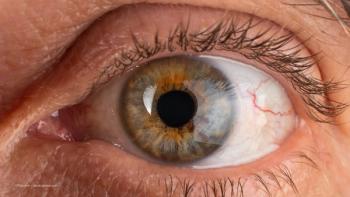
- March digital edition 2021
- Volume 13
- Issue 3
New data in anterior segment laser surgery
Research provides insight into selective trabeculoplasty, YAG capsulotomy, peripheral iridotomy
This review of recent literature, concepts, and techniques in anterior segment laser surgery will answer many of ODs’ clinical questions about selective laser trabeculoplasty (SLT), YAG capsulotomy, and laser peripheral iridotomy (LPI). Recent evidence and consensus opinion guide the discussion.
Common questions that come up in clinical practice are:
– When should we consider laser trabeculoplasty instead of adding drops?
– Does a patient with narrow angles need an iridotomy? How aggressive should we be with prophylactic iridotomy?
– What is the risk of retinal detachment with YAG capsulotomy?
SLT
Historically, SLT was viewed as a second-line therapy for open-angle glaucoma (OAG). Many clinicians consider SLT only after failure of topical therapy. However, the sands are shifting toward wide acceptance of trabeculoplasty as primary therapy for treatment-naive glaucoma.
A landmark study was the SLT/Med trial: a prospective clinical trial that randomized participants to SLT or topical prostaglandin.1 The authors reported no statistical difference in intraocular pressure (IOP) reduction or need for additional treatment. Study authors concluded that SLT is a viable first-line treatment for primary open-angle glaucoma (POAG).
More recently, a meta-analysis reported “robust evidence that SLT may be...offered as a primary treatment to patients with OAG.”2
The prospective randomized controlled LiGHT trial followed 718 participants for 3 years.3 The authors evaluated trabeculoplasty versus medications based on several criteria: quality of life, efficacy, cost, and safety. They concluded that “selective laser trabeculoplasty provides superior intraocular pressure stability to drops, at a lower cost and, importantly, it allows almost three quarters of patients to be successfully controlled without drops for at least 3 years after starting treatment.” In addition, authors found that the medication treatment arm had a slightly higher rate of rapid visual field progression and more need for incisional surgery.
In practice, SLT is commonly repeated. However, there has long been scant clinical evidence to support this practice. Two recent studies seem to provide support for the repeatability of SLT.
A 2019 review article evaluated small studies over a span of 10 years that examined repeat SLT.4 The authors concluded, “If primary SLT is unsuccessful, or its effects subside, repeat SLT, with comparable efficacy and low complication rates, should be encouraged.”
The LiGHT authors performed post hoc analysis of their study data with the goal of examining repeat SLT efficacy.5 They analyzed data of patients requiring treatment within 18 months of the original treatment. Repeat SLT was triggered by failure to achieve the individualized target IOP and/or disease progression. Some 115 eyes met these criteria.
The authors reported a 67% success rate at 18 months after repeat SLT. (Remember, these eyes had 0% success 18 months after their first SLT). Failures in the repeat group tended to be moderate or severe OAG.
The authors concluded that “after repeat SLT, the cumulative effect of initial and repeat SLT may provide an equivalent and possibly longer duration of clinical benefit than after initial SLT alone. Repeat SLT is safe, with minimal laser-related [adverse] effects seen during the LiGHT trial.”
A non-randomized, retrospective review examined an annual low-power approach to SLT for ocular hypertension.6 Investigators applied 40 to 50 spots over 360° at 0.4 mJ per spot. The procedure was repeated yearly, regardless of IOP level. A second group received traditional repeat SLT when the response waned. Patients were followed for 3 to 10 years.
The authors reported that mean-treated IOP was similar between the groups. Fewer patients in the annual low-power group needed medications to control IOP. Those who needed adjunct medications went an average of 7 years before needing medications versus 5 years in the traditional group.
A 2018 review article echoed these findings.7 The authors reported that a shorter time interval between the initial and repeat SLT can result in higher success rates because of ongoing action of initial SLT application. This approach is not standard of care, but the evidence is intriguing.
YAG capsulotomy
YAG capsulotomy is a noninvasive and safe treatment for posterior capsular opacification. The most feared complication of this procedure is retinal detachment. Sources offer conflicting figures regarding the rate of retinal detachment after YAG capsulotomy, with older reports falling in the range of 2% to 3.5%—meaning that 1 in 29 patients who receive capsulotomy could experience a retinal detachment.8-10
A recent report sought to provide a more accurate estimate that reflects modern surgical methods.11 The authors performed 11 years of chart reviews that encompassed more than 67,000 YAG capsulotomies. They concluded that the risk of retinal detachment was 0.6% at 90 days and that the risk returned to baseline after 5 months. They determined that the risk of retinal detachment from YAG capsulotomy is 1 in 200.
Two recent studies have investigated the detailed optical effects of YAG capsulotomy.
A 2020 report found that a circular capsulotomy leads to less objective intraocular scatter of light as compared with a cruciate capsulotomy.12 This correlated with fewer subjective complaints of bright light intolerance for the circular cohort. The authors reasoned that this is partially due to the lack of acute edges in a circular capsulotomy.
Another 2020 study compared higher-order aberrations in eyes with multifocal and monofocal intraocular lenses (IOLs) before and after YAG capsulotomy.13 Investigators found no significant differences between the groups before or after YAG capsulotomy. They noted significant reductions in total higher-order aberrations for both groups when comparing pre-YAG and post-YAG values. Based on this report, I am more confident in counseling my multifocal IOL patients that YAG capsulotomy will help with glare even if it does not eliminate it completely.
LPI
New data suggest that ophthalmologists may be more aggressive in performing prophylactic iridotomy for primary angle closure suspect (PACS) versus their optometrist counterparts.14 Investigators conducted a retrospective review using Massachusetts claims database statistics. This observation raises questions regarding the current state of knowledge of the natural history of primary angle closure as well as efficacy of iridotomy. Unfortunately, the literature appears to be inconclusive regarding both topics.
A 2018 report reviewed available evidence and summarized data
regarding the efficacy of iridotomy.15 The authors concluded that the level of evidence was low. Over half of the 36 studies reviewed were level 3 evidence. Only 17% of the studies were level 1 evidence. Some 81% of the studies included Asian participants only.
The authors noted that most PACS eyes do not progress to acute PAC or PAC glaucoma. They also report that up to 25% of PACS eyes may not respond to iridotomy. Despite the low rate of progression and lack of 100% efficacy for iridotomy, the authors opined that most PACS eyes are treated with iridotomy given the significant fear of APAC.
The ZAP trial was a 6-year prospective randomized controlled trial in which 1 eye per patient received iridotomy.16 The trial included 889 patients with PACS. The investigators sought to determine how many patients would develop PAC during the study period.
Surprisingly, only 36 untreated eyes and 19 treated eyes progressed to PAC. This correlates to 4.19 per 1000 eye-years in treated eyes and 7.97 per 1000 eye-years in untreated eyes. The difference between treated and untreated eyes was statistically significant.
The study was not without its limitations. Investigators excluded participants who had an IOP spike following darkroom provocation or dilation challenge test. They also performed noncontact tonometry. Finally, the question remains how applicable these results are to ethnicities other than the Chinese patients represented in the study.
Conclusion
Despite the fact that SLT, LPI, and YAG capsulotomy are well established, understanding of these treatments continues to evolve. Recent literature helps guide treatment decisions and use of these therapies. This article serves as a brief overview; readers are encouraged to explore the source articles for an in-depth analysis of these topics.
References
1. Katz LJ, Steinmann WC, Kabir A, et al; SLT/Med Study Group. Selective laser trabeculoplasty versus medical therapy as initial treatment of glaucoma: a prospective, randomized trial. J Glaucoma. 2012;21(7):460-468. doi: 10.1097/ IJG.0b013e318218287f
2. Wong MO, Lee JW, Choy BN, Chan JC, Lai J. Systematic review and meta-analysis on the efficacy of selective laser trabeculoplasty in open-angle glaucoma. Surv Ophthalmol. 2015;60(1):36-50. doi: 10.1016/j.survophthal.2014.06.006
3. Gazzard G, Konstantakopoulou E, Garway-Heath D, et al; LiGHT Trial Study Group. Selective laser trabeculoplasty versus eye drops for first-line treatment of ocular hypertension and glaucoma (LiGHT): a multicentre randomised controlled trial. Lancet. 2019:393(10180):1505-1516. doi: 10.1016/S0140-6736(18)32213-X
4. Polat J, Grantham L, Mitchell K, Realini T. Repeatability of selective laser trabeculoplasty. Br J Ophthalmol. 2016;100(10):1437-1441. doi: 10.1136/ bjophthalmol-2015-307486
5. Garg A, Vickerstaff V, Nathwani N, et al; Laser in Glaucoma and Ocular Hypertension Trial Study Group. Efficacy of repeat selective laser trabeculoplasty in medication-naive open-angle glaucoma and ocular hypertension during the LiGHT trial. Ophthalmology. 2020;127(4):467-476. doi: 10.1016/j. ophtha.2019.10.023
6. Gandolfi SA, Ungaro N. Low power selective laser trabecuoplasty (SLT) repeated yearly as primary treatment in ocular hypertension: long term comparison with conventional SLT and ALT. Invest Ophthalmol Vis Sci. 2014;55(13):818.
7. Zhou Y, Aref AA. A review of selective laser trabeculoplasty: recent findings and current perspectives. Ophthalmol Ther. 2017;6(1):19-32. doi: 10.1007/s40123-017-0082-x
8. MacEwen CJ, Baines PS. Retinal detachment following YAG laser capsulotomy. Eye (Lond). 1989;3 (pt 6):759-763. doi: 10.1038/eye.1989.118
9. Steinert RF, Puliafito CA. The Nd:YAG laser in ophthalmology: principles and clinical applications of photodisruption. WB Saunders; 1985.
10. Javitt JC, Tielsch JM, Canner JK, Kolb MM, Sommer A, Steinberg EP. National outcomes of cataract extraction: increased risk of retinal complications associated with Nd:YAG laser capsulotomy. The Cataract Patient Outcomes Research Team. Ophthalmology. 1992;99(10):1487-1497. doi: 10.1016/ s0161-6420(92)31775-0
11. Wesolosky JD, Tennant M, Rudnisky CJ. Rate of retinal tear and detachment after neodymium: YAG capsulotomy. J Cataract Refract Surg. 2017;43(7):923-928. doi: 10.1016/j. jcrs.2017.03.046
12. Li J, Yu Z, Song H. The effect of capsulotomy shape on intraocular light-scattering after Nd: YAG laser capsulotomy. J Ophthalmol. 2020;2020:4153109. doi: 10.1155/2020/4153109
13. Cinar E, Yuce B, Aslan F, Erbakan G, et al. Comparison of wavefront aberrations in eyes with multifocal and monofocal iols before and after Nd: YAG laser capsulotomy for posterior capsule opacification. Int Ophthalmol. 2020;40(9):2169-2178. doi: 10.1007/s10792-020-01397-2
14. Lee CS, Lee ML, Yanagihara RT, Lee AY. Predictors of narrow angle detection rate—a longitudinal study of Massachusetts residents over 1.7 million person years. Eye (Lond). 2020;35(3):952-958. doi: 10.1038/s41433-020- 1003-0
15. Radhakrishnan S, Chen PP, Junk AK, Nouri-Mahdavi K, Chen TC. Laser peripheral iridotomy in primary angle closure: a report by the American Academy of Ophthalmology. Ophthalmology 2018;125(7):1110-1120. doi: 10.1016/j. ophtha.2018.01.015
16. Jiang Y, Chang DS, Zhu H, et al. Longitudinal changes of angle configuration in primary angle-closure suspects: the Zhongshan Angle-Closure Prevention Trial. Ophthalmology 2014;121(9):1699-1705. doi: 10.1016/j.ophtha.2014.03.039
Articles in this issue
almost 5 years ago
Vision rehabilitation of patients with traumatic brain injuryalmost 5 years ago
Multifocal lenses for presbyopia in eyes with previous corneal surgeryalmost 5 years ago
Know risks and benefits of ocular steroid usealmost 5 years ago
How to address dry eye in the challenging corneaalmost 5 years ago
Know 4 types of allergic eye diseasealmost 5 years ago
New therapy addresses dry eye flaresalmost 5 years ago
COVID-19 & migraine: Patient impact & management tipsalmost 5 years ago
Quiz: New data in anterior segment laser surgeryalmost 5 years ago
How to prevent infection after LASIK or PRKalmost 5 years ago
Think beyond anti-VEGF injectionsNewsletter
Want more insights like this? Subscribe to Optometry Times and get clinical pearls and practice tips delivered straight to your inbox.









































